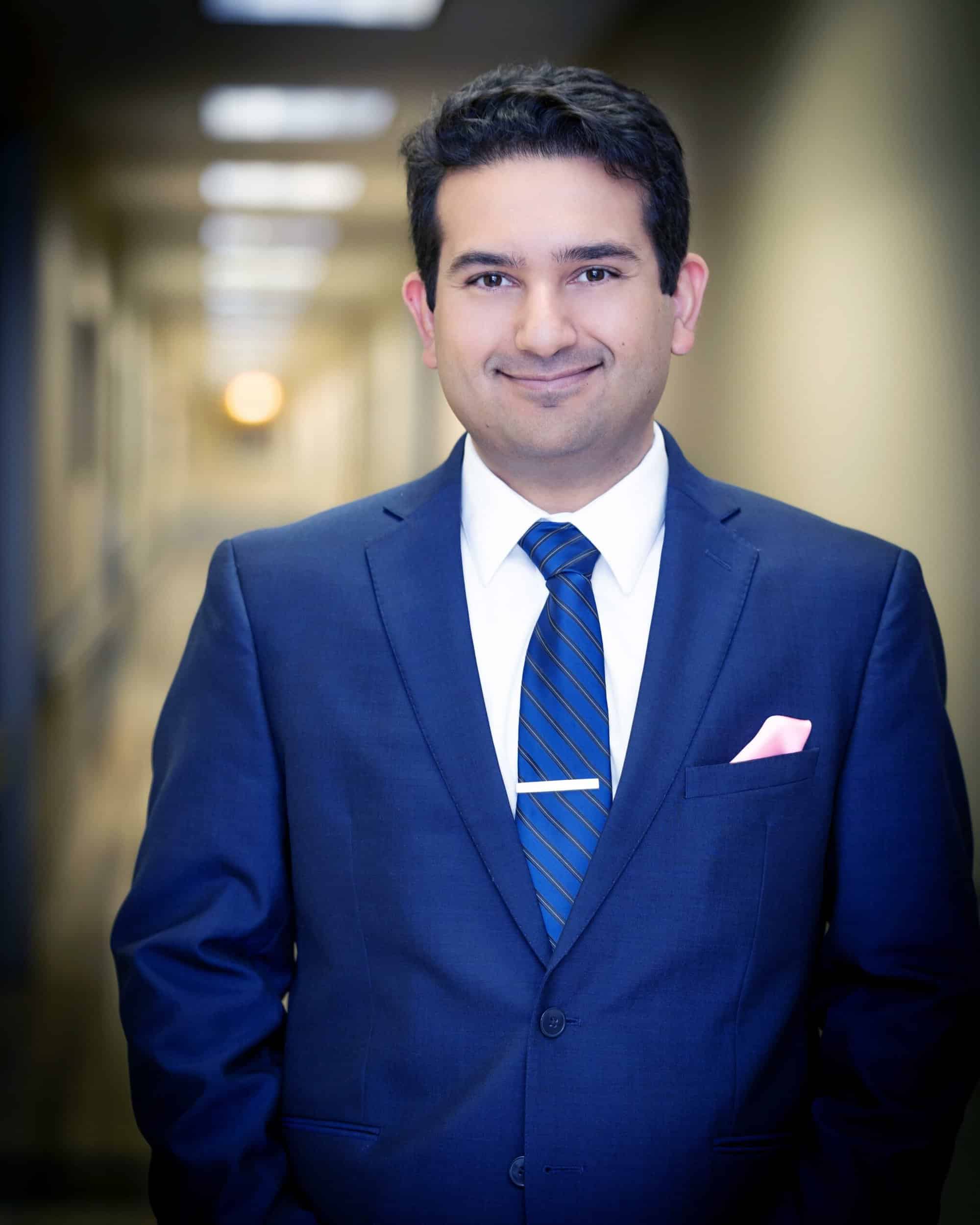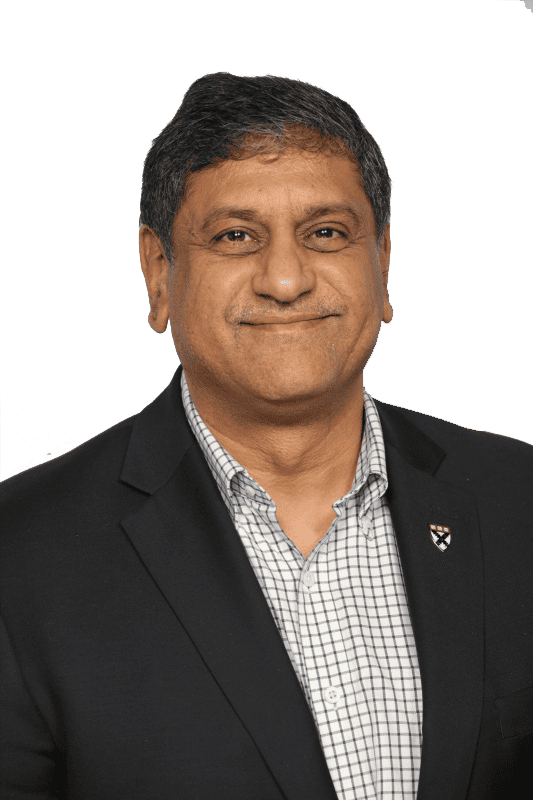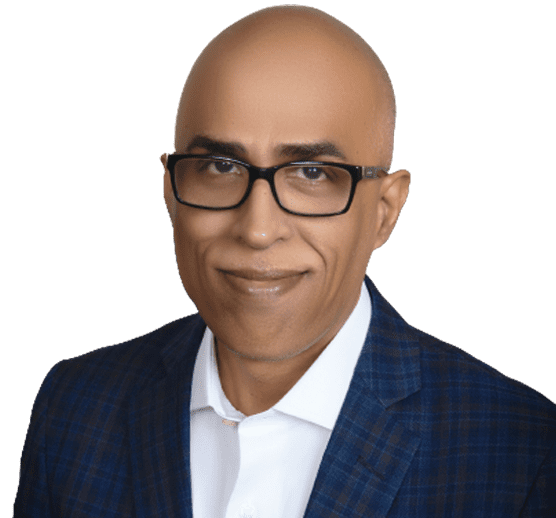Season 6: Episode #169
Podcast with Vishisht Mehta MD, FCCP
Director, Interventional Pulmonology
Comprehensive Cancer Centers of Nevada
Department Chairman, Pulmonology
MountainView Hospital

Share
In this episode, Dr. Vishisht Mehta, Director of Interventional Pulmonology, Comprehensive Cancer Centers of Nevada and also the Department Chair of Pulmonology at MountainView Hospital, discusses his passion for clinical practice and emerging technologies like AI and telemedicine.
Dr. Mehta shares how his interest in AI began through vendor outreach and evolved into a deeper exploration of its applications in pulmonology, particularly in early lung cancer detection and functional imaging. He highlights the persistent underutilization of lung cancer screenings, with only 5–6% of eligible patients getting screened, and notes AI’s role in identifying high-risk individuals and managing lung nodules. He also emphasizes the value of telemedicine in improving patient access and outcomes.
Dr. Mehta has also created a resource hub – https://pulmonary.ai/ – and produced educational videos to guide clinicians in understanding and adopting AI tools. He advises that physicians must gain foundational AI literacy to make informed technology decisions in an increasingly digital healthcare landscape. Take a listen.
Show Notes |
||||
| 01:14 | What interests you in the healthcare industry segment to become the CIO of a hospital system? | |||
| 02:47 | How long have you been in the leadership position at UMC, where is it located, and what kind of population does it serve? | |||
| 03:35 | You have done a lot of work from technology perspective to support the business needs of the hospital. You've done over 200 applications and transformed the EMR system. Would you like to share with the audience the thought process that drove those changes and what were some of those changes? | |||
| 07:47 | What do you think about your digital transformation efforts? If you could describe a few of them which have had impact on the patient population. | |||
| 08:30 | Please describe in your own, you know, way that what is digital transformation for provider systems such as yours? Where do you see it going? Some of the challenges that you might have faced and how did it actually end up impacting patients? | |||
| 11:24 | How did you manage to change the mindset of the people? How did they manage to change themselves? To adapt to this new world where technology, especially with AI and GenAI and other new technologies which are coming our way, how do you change mindsets and change behaviors and change culture over there? | |||
| 13:00 | Would you like to provide one example of how the technologies which you were implementing, and you continue to be implementing in your hospital system are accessible and usable by a variety of users, including within the hospital and outside the hospital. | |||
| 16:28 | How do you innovate? Do you involve external parties? Do you have some kind of a, you know, innovation focus department? Or is it part and parcel of everybody's, you know, kind of like daily life? | |||
| 19:24 | What are your thoughts on new technologies, especially Gen AI? Have you been experimenting with any predictive analytics or large language models? What would be your advice or thoughts to any other healthcare leaders on how to go about this journey of exploration? | |||
| 22:15 | Standing here now and looking back, if you were able to go back and change one or two things, what would you like to do differently or have done differently? | |||
Video Podcast and Extracts
About Our Guest

Dr. Vishisht Mehta, is the Director of Interventional Pulmonology at the Lung Center of Nevada, a division of Comprehensive Cancer Centers and also the Department Chair of Pulmonology at MountainView Hospital, both in Las Vegas. He is a Clinical Assistant Professor at the Kirk Kerkorian School of Medicine in Las Vegas, NV. He is fellowship trained in Interventional Pulmonology, which specializes in the minimally invasive diagnosis and treatment of lung conditions.
Dr. Mehta has authored and reviewed various scholarly articles. At international conferences, he has been a presenter and moderator for numerous sessions. He has also received awards and grants for his research endeavors. He is a recipient of the prestigious Fellow of the College of Chest Physicians designation from CHEST (American College of Chest Physicians), is a Diplomate of the American Association of Bronchology & Interventional Pulmonology, Fellow of the American Thoracic Society, serves on the Nevada Leadership Board of the American Lung Association and the Executive Board of the Nevada Cancer Coalition and the American Lung Association’s Nevada chapter. He is also the Founder of the Nevada Lung Foundation and Pulmonary.ai, both of which are his personal projects to improve lung health and AI education respectively. He has been recognized by Vegas Inc. with its prestigious “40 Under 40” award in 2023.
His additional expertise lies in the application of artificial intelligence in pulmonology, especially in the early detection of lung cancer. He has been invited to speak on his expertise in AI in pulmonology at local, national and international meetings and events.
Dr. Mehta attended the Rajiv Gandhi Medical College and Chhatrapati Shivaji Maharaj Hospital in India, receiving a Bachelor of Medicine, Bachelor of Surgery degree in 2012. He completed a residency in Internal Medicine at the Creighton University School of Medicine in Omaha. He later completed fellowships in pulmonary and critical care at Memorial Sloan Kettering Cancer Center in New York City, and an Interventional Pulmonary fellowship at Henry Ford Hospital in Detroit.
Recent Episodes
Q: Hi Vishisht. Welcome to The Big Unlock podcast. Very happy to host you. You’re joining us from Nevada, and it’s such a fun place. I was recently there at HIMSS, and we got to chat a bit. I’m Rohit Mahajan, Managing Partner and CEO at Damo Consulting and BigRio, and the host of this podcast. Would you like to start with an introduction?
Vishisht: Absolutely. Thanks for having me. It’s good to reconnect after our initial call.
My name is Vishisht Mehta. I’m an interventional pulmonologist based in Las Vegas, Nevada. I’m the Director of Interventional Pulmonary at Comprehensive Cancer Centers of Nevada, a community practice with a large oncology presence. My colleagues and I are the lung specialists within the organization. We see a wide range of conditions—COPD, asthma, lung cancer, infections, lung scarring, interstitial lung disease, and more.
I trained in New York City, and working in Las Vegas has been a very different professional environment. Since starting practice, I’ve become increasingly involved in digital health, pulmonology, and emerging technologies. It’s been very interesting to be part of that space.
Q: Yeah, of course. So Vishisht, tell us a little bit about when and how you got attracted to the tech side of things. I guess you still practice even today, right? So a large amount of your time is spent seeing patients, but on the other hand, you have this strong interest in new technologies and AI, which we’re going to talk about. So how did you get involved with that?
Vishisht: So as far as the AI thing, it started because one of the vendors reached out to kind of just talk about their product, and I found that technology interesting. This is about three, four years ago now, but it did not seem ready for prime time. The concept was definitely intriguing.
So I tried to educate myself more about: What is AI? Is AI here yet in medicine and pulmonology? Is this something that will be technically successful but may or may not actually do anything for my patients? And then, all different AI technologies are different. Even though they may look somewhat similar, some of it is patient-facing, some of it is not.
So that’s kind of how I got involved from the AI perspective. And then COVID happened, and we started doing a lot of telemedicine. So that was another exposure to digital aspects of medicine.
There are other technologies emerging, for example, functional imaging in lung diseases. Most of the normal imaging we do is static—as in, a patient takes a breath, holds the breath, and we take a picture—chest x-ray or CAT scan.
But functional imaging is new and emerging now, where we are able to see how different phases of breathing affect someone’s lung. That’s information we did not have.
So I try to expose myself to these things because we just need to know. And it’s also very interesting. This is very nascent. I’m early in my career. These technologies are early in their deployment, development, and adoption. So it’s something I think will be a part of medicine going forward—and a big part of how I’ll be involved in medicine. So that’s kind of the background.
Q: That’s very interesting—how you segued into AI and technology. You talked about telemedicine as well. Just curious to know, on the telemedicine side of things—obviously the number of visits has dropped—but are you still seeing a mix, Vishisht?
Vishisht: Definitely. Telemedicine is here to stay, and our patients like it. We like it. It works very well for the right scenario. Sometimes if a patient is coming back to follow up on some imaging or blood test, they don’t necessarily need to be in the office. We don’t need to be sitting across from each other. We can do it just like how we’re doing now—have a conversation, look at labs, blood work, images, and make a decision.
I’ve had patients do telemedicine appointments from the park, the playground, from home. A few have done it at the airport. Routinely, people do it during lunch breaks or at work. Now they don’t have to miss work. They don’t need someone to drive them. There’s so much time saved.
Because it’s easy, you can have visits more frequently. I’ve had patients with bad flare-ups of COPD or asthma. We do a telemedicine visit, I prescribe what they need, and they avoid going to the hospital. They don’t have to come in. If they have an infection, others aren’t exposed. So our patients are also safe. It just works. As a concept, I think it’s very useful, helpful, and definitely here to stay.
Q: That’s amazing. The other thing I wanted to ask is something you mentioned—functional medicine or functional imaging. Could you talk about that? Are the machines different and new? That must mean more data, right? How does that work?
Vishisht: Functional imaging is very interesting. There are different parts to it. For example, we do a test called pulmonary function test—typically called a breathing test. A patient sits in a transparent box. The box is closed because we need to control the environment. They get coached and do a series of breathing maneuvers—deep breath in, deep breath out, blow hard, breathe normally.
These tests assess how the lungs are functioning. We can see if someone has asthma, COPD. We can measure lung size and the ability to extract oxygen. That’s very helpful information—but there are no pictures involved.
Also, for each outcome, we get a composite answer for both lungs combined. But that assumes the condition affects all parts of the lungs equally, which is not always true. Some patients have emphysema more in the upper lungs, or conditions that affect the edges or bottom parts.
These tests can’t tell that. The hope with functional imaging is that we’ll be able to image the lungs entirely and see if different areas function differently. That’s very promising and may change how we understand lung conditions.
You asked about hardware. Some technologies, like scanners using hyperpolarized xenon gas, do require additional hardware, capital investment, and training. But other imaging technologies use existing scans with different protocols. For example, we might do a scan after a deep breath in, then after a breath out, and compare.
So for those, we already have the technology—we just need different protocols and people who can interpret the results. The scan machine is the same; the protocol and interpretation differ. The leap to get there is small. These are just some examples of where things are going. I believe it will move in that direction, but we’ll have to see. It’s exciting to have new tools to offer our patients.
Q: Right. And let’s talk about AI. You mentioned it a couple of times. What kind of AI is applicable in your area of practice? What are you seeing?
Vishisht: AI in medicine—and in pulmonology—we’re seeing it show up in different areas. Most prominently, we’re seeing it in lung cancer. A lot of it is focused on early detection of lung cancer, or identifying spots or nodules on the lungs.
We know lung cancer is the most lethal cancer. But if caught early, survival is much better. In some cases, we’re talking about cure—not just management. So we want to screen high-risk patients.
AI helps by identifying high-risk patients, currently by looking at smoking history and pulling that information from the chart. It flags those patients for lung cancer screening discussions.
Another area is incidental findings. A patient might get a CT scan of the abdomen, and a small lung spot is seen in the lower lung—even though the scan wasn’t done for that reason. Same with scans of the neck or thyroid—you might see part of the upper lung.
AI software can identify these nodules, whether in the report or image, and generate a list for the hospital or doctors. It flags them so we can follow up and determine if they’re important.
We’re also seeing AI used to judge the risk of cancer in these spots. Many people have lung nodules, most of which are not concerning. But AI can analyze data we can’t see with our eyes—data that’s in the scan—and help us assess whether a spot is likely cancerous.
It’s not diagnosing cancer yet, but it helps assess risk. So that’s where we’re seeing AI most—in early detection and identification of nodules.
Q: That’s great. You mentioned lung cancer screening—I have a curious question. In your health system or nationwide, since you’re connected with physicians elsewhere, what is the current percentage of eligible people who actually get screened? Is there a gap?
Vishisht: There is a massive gap. It’s probably the biggest gap between eligibility and screening for any cancer. Ballpark, we’re screening about 5–6% of eligible patients. That’s a huge miss compared to other cancers like colon or breast, where screening is around 70–80%.
Q: Any thoughts on why that gap is smaller for those cancers and bigger here?
Vishisht: Yeah, you know, at some level, lung cancer screening recommendations have been out for a while, but for whatever reason, they seem to not have percolated as much. I think the true number of patients who get lung scans is probably a little higher than this because patients may be getting scans for reasons other than screening, which maybe are not being tracked. But there’s no doubt that the gap is there.
I think there’s a lot of stigma also. Because lung cancer, because of the association with smoking, has some amount of blame attached to it, unfortunately. We should not be blaming patients, certainly not for actions in the past. And if someone is eligible, we should have the discussion with them.
One of the things to think about, if you think about AI in this space, is AI is doing a lot of interesting things when we find the lung spot. But what about finding the patients who need to be screened? I think that’s another place where AI is going to help us.
And I will also say we have to keep in mind that maybe the answer is not AI to improve lung cancer screening. Maybe we just need resources, education, manpower. That’s another long discussion. But we should not be thinking that AI is going to fix it, and it could be many things that are likely to help move the deal.
Q: That brings me to the point we were talking about a little earlier—that you actually have a website and a video that you’ve put up for people to learn more about this. You mentioned pulmonary.ai. Also a video on YouTube, right? So would you like to tell us a little bit more about that?
Vishisht: Yeah, for sure. Again, like two-ish, maybe three years ago, when I was trying to get more details and get more involved, I said, let me go and find AI and pulmonology resources. So I went online and I went looking and looking and looking, and I could not find anything where all the stuff that I was interested in was in one place.
I had to go and pull this article from here, that article from there, this clip from here, to try and educate myself. And then I said, why don’t I try and make the place where I can post some of these articles? It’s not going to be everything—because it’s impossible to keep up. One-man army, sort of.
But to my surprise, pulmonary.ai, the domain was available, so I took it. And I have been trying to add different pieces of pulmonary and AI literature, research articles in different areas, so other people who are interested in this subject, like I am, don’t have to run around as much. At least they can go to this website and have a good start.
This is not meant to be exhaustive and cover every possible thing—again, it’s not possible. But at least as a starting point, they can go on the website. I maintain it myself. There’s no commercial, no ad, no sponsor. I pay for it myself. It’s just my personal hobby and effort to find like-minded people.
That effort helped me generate my first large lecture on this, which was AI in Pulmonary Nodule Management. I went on YouTube, I did that for the Society for Advanced Bronchoscopy, a wonderful medical society that I’m a part of. And a year later, the follow-up lecture, which is the one you’re referring to, was Which AI Should I Buy?
Because after the first one, we started to see so many different vendors show up in this lung nodule space. And the question that I kept getting asked was, “Okay, that’s fine. Which one?” And not only which one, but “How do I decide which one?”
So that led to the second one, Which AI Do I Buy? And that’s, of course, a very important discussion. Sometimes people ask, “Do I definitely need AI?” And right now, I’m saying—I don’t know if everyone definitely needs it, but I think the conversation should definitely be had.
Because there are many challenges—cost, integration, reimbursement. The other challenges are the physicians, administrators, or nurse navigators—do they know how to use the software? Do they understand the pros and cons?
We do not want to have a problem of round peg, square hole—trying to fit things where they’re not supposed to fit. That’s mostly what I speak about—how rather than what. Because it’s not for me to tell any one person this is better or that is better.
Q: So, what’s one or two nuggets from the Which AI Should I Buy? video that you’d like to share here?
Vishisht: That’s a very hard question. I think one thing that’s important, and I’ve realized this over time, is that physicians, administrators—whoever is interacting with the software or making purchasing decisions—need to have a basic level of understanding of what they’re interacting with.
Even when we routinely read research articles, we’ve not—and for obvious reasons, because AI wasn’t there—we’ve not been familiar with the terms needed to judge AI literature. So when you look at an AI paper, you have to look at or be familiar with terms like structured/unstructured data, unsupervised learning, what was the development, what was the deployment, internal validation, external validation.
So I think one takeaway would be to familiarize yourself with those kinds of things. Where can you go? Shameless plug—my lecture is one place someone can start, but that’s not the be-all and end-all. There are resources online. Some medical societies have material. MIT has a course on this—I’ve taken it. I think it’s a very good course. Stanford has one through Coursera. There are places where we should go.
So I guess the one takeaway would be—if people are considering these technologies, then just understand how they are different, so the right people can make the right decision for the right circumstance, if it is going to be some AI technology.
Q: That’s awesome. I think we’re almost coming to the end of the podcast today. I’m hoping we’ll have more conversations in the future.
Vishisht: I appreciate the opportunity to talk to you and your audience. In closing, all I’d say is that healthcare is evolving, changing—probably faster in the digital space than we’ve seen before.
So I’d want my colleagues to go out there, educate themselves, listen to lectures, and follow folks like yourself. A lot of the new information may not come from traditional medical societies—just because of the speed. Things change faster than we’re used to.
And at the end of the day, being well-informed, as much as possible, is important with these newer developments. So that’s all I got. Thank you.
Subscribe to our podcast series at www.thebigunlock.com and write us at [email protected]
Disclaimer: This Q&A has been derived from the podcast transcript and has been edited for readability and clarity.
About the host
Paddy is the co-author of Healthcare Digital Transformation – How Consumerism, Technology and Pandemic are Accelerating the Future (Taylor & Francis, Aug 2020), along with Edward W. Marx. Paddy is also the author of the best-selling book The Big Unlock – Harnessing Data and Growing Digital Health Businesses in a Value-based Care Era (Archway Publishing, 2017). He is the host of the highly subscribed The Big Unlock podcast on digital transformation in healthcare featuring C-level executives from the healthcare and technology sectors. He is widely published and has a by-lined column in CIO Magazine and other respected industry publications.

Rohit Mahajan is an entrepreneur and a leader in the information technology and software industry. His focus lies in the field of artificial intelligence and digital transformation. He has also written a book on Quantum Care, A Deep Dive into AI for Health Delivery and Research that has been published and has been trending #1 in several categories on Amazon.
Rohit is skilled in business and IT strategy, M&A, Sales & Marketing and Global Delivery. He holds a bachelor’s degree in Electronics and Communications Engineering, is a Wharton School Fellow and a graduate from the Harvard Business School.
Rohit is the CEO of Damo, Managing Partner and CEO of BigRio, the President at Citadel Discovery, Advisor at CarTwin, Managing Partner at C2R Tech, and Founder at BetterLungs. He has previously also worked with IBM and Wipro. He completed his executive education programs in AI in Business and Healthcare from MIT Sloan, MIT CSAIL and Harvard School of Public Health. He has completed the Global Healthcare Leaders Program from Harvard Medical School.

Paddy was the co-author of Healthcare Digital Transformation – How Consumerism, Technology and Pandemic are Accelerating the Future (Taylor & Francis, Aug 2020), along with Edward W. Marx. Paddy was also the author of the best-selling book The Big Unlock – Harnessing Data and Growing Digital Health Businesses in a Value-based Care Era (Archway Publishing, 2017). He was the host of the highly subscribed The Big Unlock podcast on digital transformation in healthcare featuring C-level executives from the healthcare and technology sectors. He was widely published and had a by-lined column in CIO Magazine and other respected industry publications.
Stay informed on the latest in digital health innovation and digital transformation